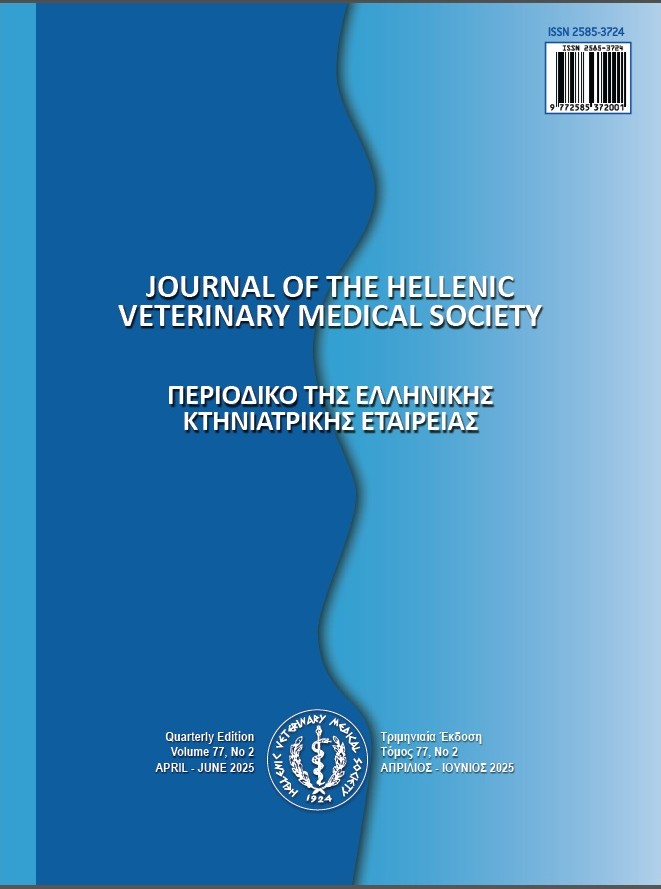Biochemical and microbiological characteristics of industrial Tsalafouti cheese industrial Tsalafouti cheese
Περίληψη
Tsalafouti is a white cheese with mild sour, acidic taste. Its spreadable texture has no gas holdings. In the present work, Tsalafouti cheese was industrially manufactured and its biochemical, organoleptic and microbiological characteristics were investigated. At 30 days of storage, the mean pH was 4.05 and moisture content was 68.06%, fat 14.9%, fat-in-dry matter 46.52%, salt 1.55%, ash 2.4%, and proteins 10.92%. Level of proteolysis remained stable during storage. The volatile compounds 3 methyl butanol, acetoin, ethanol, acetone, were found in high levels on day 30. During the organoleptic evaluation Tsalafouti was very much appreciated until day 45. Total viable counts enumerated on skim-milk containing media at 37oC remained constant within 7.5-8.0 log CFU/g from day 15 to day 90 of storage of the industrially ripened cheese. However, typical mesophilic lactic acid bacteria (LAB) increased to 8.1-8.5 log CFU/g and predominated the technological biota, whereas typical thermophilic LAB, inclusive of enterococci, remained subdominant by 1-3 log units throughout storage. Yeasts were beneficial for the sensory quality of industrial Tsalafouti from day 30 to 45 when their counts were below 6-7 log CFU/g; however, yeasts turned to be the primary spoilage agents after their counts increased to 7.5 log CFU/g with prolonged storage (day 60 to 90). All industrial cheese samples were microbiologically safe as due to their low pH (3.85 to 4.13). These data could be useful for the better recognition of traditional Greek Tsalafouti cheese.
Λεπτομέρειες άρθρου
- Πώς να δημιουργήσετε Αναφορές
-
Pappa, E., Kondyli, E., Samelis, J., Malamou, E., Kakouri, A., & Vlachou, A. (2023). Biochemical and microbiological characteristics of industrial Tsalafouti cheese: industrial Tsalafouti cheese. Περιοδικό της Ελληνικής Κτηνιατρικής Εταιρείας, 74(3), 6029–6038. https://doi.org/10.12681/jhvms.30719
- Τεύχος
- Τόμ. 74 Αρ. 3 (2023)
- Ενότητα
- Research Articles

Αυτή η εργασία είναι αδειοδοτημένη υπό το CC Αναφορά Δημιουργού – Μη Εμπορική Χρήση 4.0.
Οι συγγραφείς των άρθρων που δημοσιεύονται στο περιοδικό διατηρούν τα δικαιώματα πνευματικής ιδιοκτησίας επί των άρθρων τους, δίνοντας στο περιοδικό το δικαίωμα της πρώτης δημοσίευσης.
Άρθρα που δημοσιεύονται στο περιοδικό διατίθενται με άδεια Creative Commons 4.0 Non Commercial και σύμφωνα με την άδεια μπορούν να χρησιμοποιούνται ελεύθερα, με αναφορά στο/στη συγγραφέα και στην πρώτη δημοσίευση για μη κερδοσκοπικούς σκοπούς.
Οι συγγραφείς μπορούν να καταθέσουν το άρθρο σε ιδρυματικό ή άλλο αποθετήριο ή/και να το δημοσιεύσουν σε άλλη έκδοση, με υποχρεωτική την αναφορά πρώτης δημοσίευσης στο J Hellenic Vet Med Soc
Οι συγγραφείς ενθαρρύνονται να καταθέσουν σε αποθετήριο ή να δημοσιεύσουν την εργασία τους στο διαδίκτυο πριν ή κατά τη διαδικασία υποβολής και αξιολόγησής της.




